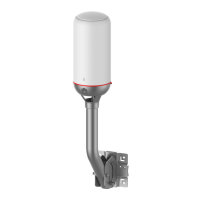8.4 The Sessions Screen
Use the Sessions screen to limit the number of concurrent NAT sessions each client can use.
Click
Network Setting > NAT > Sessions to display the following screen.
Figure 8-5 Network Setting > NAT > Sessions
The following table describes the fields in this screen.
Table 8-4
Network Setting > NAT > Sessions
Label Description
MAX NAT
Sessions Per
Host
Use this field to set a common limit to the number of concurrent NAT
sessions each client computer can have.
If only a few clients use peer to peer applications, you can raise this
number to improve their performance. With heavy peer to peer
application use, lower this number to ensure no single client uses too
many of the available NA
T sessions.
Apply Click Apply to save your changes.
Cancel Click Cancel to restore your previously saved settings.
8.5 The ALG Screen
Use the ALG screen to enable or disable SIP Application Layer Gateway (ALG) on the LTE
Device. Click Apply
to save your change.
The SIP ALG allows SIP calls to pass through NAT by examining and translating IP
addresses embedded in the data stream. When the LTE Device registers with the SIP register
server, the SIP ALG translates the LTE Device's private IP address inside the SIP data stream
to a public IP address. You do not need to use STUN or an outbound proxy if you enable the
SIP ALG.
For the LTE environment, the LTE interface may experience heavy overhead when sending
SIP re-registration requests due to SIP server NAT session timeout. This default NAT session
timeout value (3600 seconds) helps to decrease the chance of this happening.
LTE CPE B2368
User Guide
8 Network Address Translation (NAT)
Issue 03 (2019-01-31) Copyright © Huawei Technologies Co., Ltd. 74

